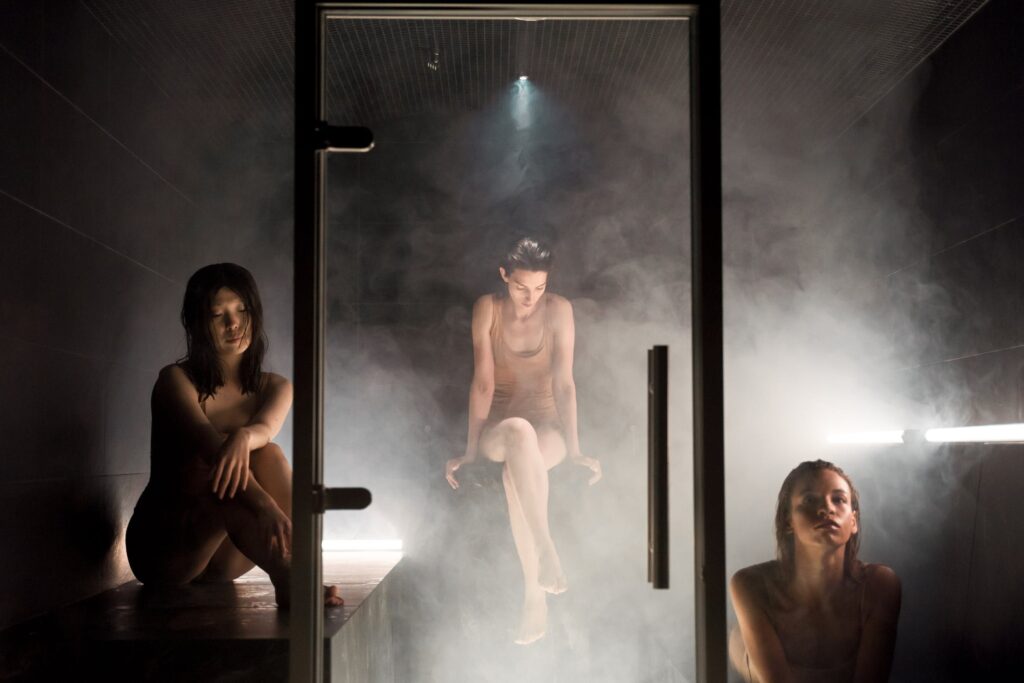You may be aware that sun exposure can be harmful to the skin; this is specifically true for UV rays. The use of infrared light treatment, on the other hand, has been shown to have beneficial results. When new skin cells are prompted to proliferate more healthily due to the absorption of infrared light by the skin, your skin's innate capacity to heal itself is enhanced.
The research suggesting that light therapy, also known as photobiomodulation, is beneficial to patients is quite convincing. Numerous studies have shown that light therapy can be quite beneficial if the gadget used to administer the treatment emits light of the appropriate wavelength and has the appropriate amount of power.
Infrared therapy is a very new and cutting-edge form of light-based treatment that can alleviate inflammation and pain in several different areas of the body. In contrast to ultraviolet light, which can cause the skin to become damaged, infrared light encourages the regeneration of skin cells. When infrared light of a specific wavelength is directed into an area of tissue damage or inflammation, it stimulates the healing of damaged cells. Have a look at the Portable Sauna Melbourne options we have available to find a solution to your problem.
The capacity of infrared light to reach even the deepest layers of the skin and relieve pain more effectively is one of its defining characteristics. In addition, treatment with infrared light is risk-free, non-invasive, and does not cause any discomfort. As a result, it has the potential to deliver a wide range of advantages to one's health.
What Is Red Light Therapy?
Since the invention of lasers, red light treatment, which is also referred to as photobiomodulation (PBM) or lightbox therapy, has been used for the past four decades. To be more explicit, what is it? Red light therapy is a treatment that involves the use of specific wavelengths of light in order to heal, repair, and protect damaged or deteriorating tissue that is at risk of passing away. Regarding healing with red light, the most beneficial wavelengths are between 630 and 670 nanometers and 810 and 880 nanometers, despite the fact that different wavelengths have varied effects on the body.
Red light therapy, often known as RLT, is a controversial treatment approach that uses low-level red wavelengths of light to address a wide range of skin disorders, including but not limited to wrinkles, scars, and wounds that do not heal completely.
RLT was utilized by researchers in the early 1990s to assist in cultivating plants in space. The researchers discovered that the bright light emitted by red light-emitting diodes (LEDs) helped stimulate the growth of plant cells as well as the process of photosynthesis.
Following this, the red light was investigated for its use in medicine; more specifically, the goal of this research was to determine whether or not RLT could boost energy levels within human cells. The researchers had high hopes that RLT would prove to be an efficient method of treating the concerns with bone density, slow wound healing, and muscle atrophy that are brought on by weightlessness in space travel.
You may have heard of red light therapy (RLT) by its other names, which include:
- cold laser therapy
- photobiomodulation (PBM)
- biostimulation
- low-level light therapy (LLLT)
- low-power laser therapy (LPLT)
- soft laser therapy
- photonic stimulation
RLT is referred to as photodynamic therapy when it is combined with drugs that make the patient more sensitive to light. In this method of treatment, the light's primary function is that of a catalyst in the activation of the drug.
There are numerous variations of the treatment known as red light therapy. It is believed that the red light beds typically seen in beauty salons can help minimize aesthetic skin concerns such as stretch wrinkles and marks. Psoriasis, slow-healing wounds, and even the negative effects of chemotherapy are some of the more serious disorders that can be treated using red light treatment, which is administered in a medical office setting.
Although there is some evidence to suggest that RLT may be a viable treatment for specific disorders, there is still a lot to learn about how it acts, even though there is some data to suggest that RLT may be a treatment.
How does red light therapy work?
It is believed that red light accomplishes its goals by causing a metabolic reaction in the cells that works to fortify the mitochondria. It is in the mitochondria that the cell's energy is generated, making the mitochondria the "powerhouse" of the cell. ATP is the name of the molecule that stores and transfers energy and is present in the cells of all living organisms (adenosine triphosphate).
A cell can generate more ATP if its mitochondria are given a boost in function through the use of RLT. Cells can work more effectively, regenerate themselves, and make repairs when they have access to more energy.
RLT is distinct from therapies that include lasers or intense pulsed light (IPL) in that it does not result in any harm to the skin's outermost layer. In order for laser and pulsed light therapies to be effective, they must first cause a measured amount of damage to the surface of the skin. This, in turn, stimulates the formation of new tissue. This arduous step is skipped over by RLT, which works by directly promoting the regeneration of skin cells. The light that is released by RLT can penetrate approximately 5 millimetres below the surface of the skin.
How is red light therapy used?
Since the first experiments were carried out in space, there have been thousands of laboratory research, and hundreds of clinical tests carried out to identify whether or not RLT has any positive health effects.
Although the advantages of red light therapy have been the subject of a great deal of research, the findings of those studies have been mixed at best. For example, the Centers for Medicare and Medicaid Services (CMS) has concluded that there is not enough data to indicate that these devices are more effective than the treatments that are currently available for treating wounds, ulcers, and discomfort.
RLT will not be proven successful without the completion of an additional clinical study. However, there is currently some evidence to indicate that RLT may have the following advantages in the future.
- helps in the healing of wounds and the restoration of tissue
- helps those who suffer from androgenic alopecia to experience improved hair growth
- assistance for the treatment of carpal tunnel syndrome temporarily
- helps wounds that are healing more slowly, such as those caused by diabetic foot ulcers
- decreases the number of psoriasis lesions
- People who suffer from rheumatoid arthritis can benefit from a reduction in their morning stiffness and pain in the short term.
- May lessen the severity of some of the adverse effects that are associated with cancer treatment, including oral mucositis.
- Enhances the tone of the skin while also stimulating collagen production to reduce the appearance of wrinkles,
- Helps to heal skin damaged by the sun
- Protects against future outbreaks of cold sores caused by the herpes simplex virus.
- People suffering from degenerative osteoarthritis of the knee may experience an improvement in joint health due to using this product.
- Aids in the reduction of scars
- those who suffer from Achilles tendon pain can experience a reduction in both the pain and inflammation they are experiencing.
Due to a lack of solid evidence, RLT is not currently endorsed or covered by insurance providers for the treatment of certain illnesses at this time. However, there are currently a few insurance providers that will pay for using RLT to minimize oral mucositis in patients undergoing treatment for cancer.
Why is Infrared Therapy Widely Used Today?
Infrared therapy is utilized rather frequently in various medical specialties, including but not limited to medicine, dentistry, veterinary medicine, and the treatment of autoimmune illnesses. Due to the fact that the therapy is both risk-free and all-natural, it is currently being used as an alternative therapy for a wide variety of painful ailments, such as arthritis, muscular pain, and joint stiffness, to name just a few.
Infrared therapy serves a variety of purposes within the body of a person. Detoxification, pain alleviation, reduction in muscular tension, relaxation, improvement in flow, weight loss, skin cleansing, reduced diabetic side effects, immune system boosting, and lower blood pressure are some of these benefits.
What are the Health Benefits of Infrared Therapy?
Cardiovascular Health
One of the most significant advantages of infrared therapy for one's health is enhancing one's cardiovascular health. The generation of nitric oxide, a crucial signalling molecule that is critical for the health of blood vessels, is increased when infrared light is exposed to the tissue. This molecule aids in the relaxation of the arteries and keeps blood from clotting and clumping in the vessels, hence reducing the risk of cardiovascular disease. In addition to these benefits, it also neutralizes free radicals, which helps to reduce oxidative stress and maintains healthy blood pressure. Are you looking for the Melbourne Sauna? Stop looking; Portable Sauna has got you covered in every way.
The production of nitric oxide is vital to the process of restoring blood circulation, which in turn supplies wounded tissues with more oxygen and nutrients. As a result, exposure to infrared light accelerates the healing process of wounds and promotes the regeneration of wounded tissues, thereby lowering both inflammation and discomfort.
Pain and Inflammation
The use of infrared therapy as a treatment for inflammation and pain is both effective and safe. It can go all the way through the skin's layers and reach the underlying muscles and bones. As a result of infrared therapy's ability to stimulate and improve blood circulation in the epidermis and other regions of the body, it can provide nutrients and oxygen to injured tissues, promoting the healing process. It reduces pain, calms inflammation, and protects the body from the damaging effects of oxidative stress.
Muscular Injuries
Infrared therapy helps to increase the function of the mitochondria found inside cells, which in turn stimulates the production of new muscle cells and the repair of damaged tissue. In other words, the mending process following muscle damage can be sped up by using infrared light.
Detoxification
Saunas are one method that can be used to administer infrared treatment. Detox is essential since they have the potential to improve one's immune system. Detox, on the other hand, helps biological systems run more normally, which in turn improves the digestion of food. The core temperature of the body rises as a result of exposure to infrared light, which promotes detox at the cellular level.
Potential Cancer Cure
The use of infrared radiation as a treatment for cancer is currently being researched. According to studies, nanoparticles undergo substantial activation when they are subjected to infrared light; as a result, the particles become extremely hazardous to the cancer cells that are in the surrounding area. Photoimmunotherapy is one form of treatment that can be utilized; it involves using a conjugated antibody-photo absorber complex that attaches to cancer cells.
The mitochondrial activity of cells can be improved with the help of red light treatment, which acts from the inside out. In turn, this results in some benefits for the skin. Red light soothes the skin by reducing inflammation, evening out skin tone, repairing sun damage, fading scars and stretch marks, and even building collagen in the skin, which helps reduce the appearance of wrinkles. In addition, it can cure wounds and protect against the recurrence of herpes simplex or cold sores. The lymphatic system is targeted by red light therapy, which increases your body's ability to detoxify itself by boosting blood circulation. It is even possible that it will encourage hair growth in the hair follicles of your scalp.
According to several studies, exposure to red light can reverse the effects of age-related macular degeneration on the eyes. In addition, osteoarthritis of the knee, cognitive dysfunction following brain injury, hypothyroidism, and fibromyalgia are all conditions that can be treated with this medication.
Not only did [women] experience healthy progesterone increases with the use of daily, full-body red and near-infrared laser treatments with our devices, but they also experienced balanced progesterone-to-estrogen ratios.
What are the best sources of red light therapy?
- You can participate in red light treatment with the assistance of a trained specialist, such as a rheumatologist or a dermatologist. Ask your primary care physician for a recommendation.
- Red light therapy can be found at several medical spas for anywhere between $50 and $100 for each session. Infrared saunas are distinct from traditional saunas because they heat the body from the inside out rather than the outside in. Even though they do it in very different ways, red light treatment and infrared saunas both have the ability to improve mitochondrial function. Although the light from an infrared sauna may be seen, it travels far further inside the body than the light used in red light therapy. You'll need to try out a few different options to see which one suits your needs the best. Read this to learn more about the advantages of using an infrared sauna.
- Enjoy the health advantages of red light without leaving the comfort of your own home by using a light therapy device such as Joovv. Install red lights all around your property; you can find red lights on Amazon for as cheap as $6 each. Utilize them first thing in the morning and again later in the night, as well as in a therapeutic setting, to improve mitochondrial function and the creation of collagen. Keep the light shining directly on the wound for a couple of minutes daily. You may also get LED coloured lights with a remote control that adjusts both the brightness and the colour. (Because of this, you can change the colour from blue to red depending on the time of day.)
- The red light that appears on your computer or smartphone screen is the most recent member of the family of red lights. Apple's new iOS 10 has a function called Colour Tint that, when used, makes your entire screen appear red. Apple adds that this feature has some useful applications. Even though not all of them are strictly related to health in some way, like a box that emits red light for therapy, it is likely that the red light will cause you to squint less when you stare at your screen in the middle of the night.
But does red light therapy work?
Red light wavelengths have an effect on the biochemistry of cells in the body by enhancing mitochondrial function, often known as the capacity to make cellular energy. The more cellular energy that is produced, the more effectively the body as a whole operates. When red light wavelengths are applied to the skin's surface, they can go 8-10 millimetres deeper into the skin than other light wavelengths. Consequently, depending on the location at which the red light is used (for example, the head or the knee), all of the skin layers, lymph channels, blood vessels, nerves, and even hair follicles that are nearby will be affected.
Red light therapy is not, by any stretch of the imagination, a panacea for all diseases and ailments, although the internet is frequently filled with reports of miraculous remedies for virtually any ailment imaginable. RLT is regarded as an experimental treatment for the majority of diseases.
There's limited-to-no evidence showing that red light therapy does the following:
- treats depression, seasonal affective disorder, and postpartum depression
- fights periodontitis and dental infections
- activates the lymphatic system to help "detoxify" the body
- aids in weight loss
- boosts the immune system
- cures acne
- reduces cellulite
- treats back or neck pain
- treats cancer
When RLT is used in conjunction with cancer treatments, it is essential to remember that the light serves the purpose of activating another drug. Other forms of light therapy have also been shown to help treat some of the illnesses listed above. For example, research has shown that white light treatment is more effective than red light therapy for treating the symptoms of depression. The treatment of acne using blue light therapy is more popular, but its effectiveness is questionable.
Are there similar treatment options?
The wavelengths of red light aren't the only ones being researched for their potential medical applications. Tests on people have been conducted in a manner analogous to this one, and the subjects of those experiments have been exposed to green light, blue light, and a combination of multiple wavelengths.
There are other kinds of light-based therapies available. You can ask your doctor about the following:
- natural sunlight
- laser treatments
- ultraviolet light B (UVB)
- blue or green light therapy
- psoralen and ultraviolet light A (PUVA)
- sauna light therapy
Side Effects of Infrared Radiation
Due to the fact that infrared radiation may only go about 4 centimetres into the human body, the greatest dangers associated with exposure to infrared radiation are to the skin and the eyes.
In addition, safety tests on a broad scale should be done to assess the long-term consequences of exposure to infrared radiation, as well as the impacts of different light wavelengths and "doses."
As a result, the following list of potential negative consequences of infrared radiation is not meant to be an exhaustive compilation of all of those impacts.
Skin Damage
It is estimated that around 65% of the infrared light that strikes a human body makes it all the way through to the dermis before being absorbed. One potential cause for concern at this point is the acceleration of photoaging (aging due to light). Also, check out the Portable Sauna Melbourne page, which includes all the information regarding Portable Saunas that you could possibly require.
One study indicated that greater exposure to infrared light boosted MMP-1 production, although ultraviolet rays are the primary agents that cause photoaging. It is possible that MMP-1 is a contributor to photoaging, which leads to a reduction in the formation of collagen and elastin in the skin.
The rise in the surface temperature of the skin may also have unintended consequences. The production of reactive oxygen compounds can be brought about by a rise in temperature brought about by an induced heat shock, and these species have the potential to cause damage over time.
Tattooed skin is more susceptible to damage from infrared radiation. Inflammation of the skin was triggered by exposure to far infrared light in one male (pseudolymphoma).
Eye Damage
Infrared rays are picked up by the lens of the eye, which has a high level of sensitivity to them. Experiencing high power sources over a prolonged period of time may contribute to the development of cataracts.
Infrared radiation has the potential to cause damage to essential proteins, which can disrupt both the lens's regular functioning and the flow of ions and enzymes through it. This might cause the lens to become less transparent.
Caveats
The number of available clinical testing using infrared radiation is rather small. In addition, the vast majority of the existing human research is not of a particularly high standard (not double-blind or having a large sample size).
Before entering an infrared sauna, it is important to get medical clearance first.
Due to the absence of reliable safety data and the potential risks associated with overheating, infrared light should be avoided by pregnant women, the elderly, children, and persons who have a compromised immune system.
In the form of heat, infrared radiation from the sun is constantly present for humans to experience throughout each day. Infrared saunas are becoming increasingly popular, but some experts are concerned about the potential adverse effects on users' health. According to the wavelength of infrared light, it is possible for someone to suffer from thermal or heat damage. Even in the absence of pain, thermal damage can still occur. In addition, infrared therapy should never be administered to pregnant women, those who suffer from cardiovascular conditions, or those who are otherwise ill.
In addition, medical professionals strongly discourage the use of infrared therapy as a sole treatment for chronic conditions, as this approach would exclude the need for the administration of prescribed medications and other treatment methods. Even though infrared therapy appears to provide a wide range of potential advantages for patients' health, more research needs to be done. Therefore, at this point in time, it ought to be considered an addition to medical care, and all other regimens ought to be continued as they have been recommended.
Infrared therapy is a treatment that involves the application of light with infrared wavelengths to tissues that are either inflammatory or sick. It is believed that by heating the tissues, infrared light increases circulation and lessens inflammation, enhancing wound healing and other processes. Proponents of this theory claim that this occurs when the tissues are heated.
Psoriasis, inflammation, and diabetic ulcers, in general, appear to benefit the most from infrared light treatment at this point in time. There is a lack of solid data to support the use of infrared therapy for many of its more common applications.






